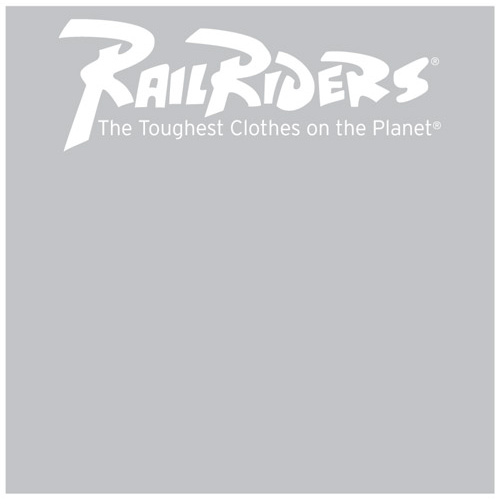Marc Goddard won't mind if you call him "wet behind the ears." The 35-year-old founder of Bio Bio Expeditions has worked as a whitewater rafting guide for the past ten years in the United States, New Zealand, Costa Rica, Africa, Chile, Turkey, and Siberia. In Africa he led our week-long trips on the Zambezi from Victoria Falls to Lake Kariba. He has led expeditions down some of the world's wildest and most difficult rivers, including the Futaleufu in Chile. Home-based in landlocked Truckee, California, just north of Lake Tahoe, Goddard also teaches high-school geography.
His most recent adventure was running the first commercial raft descent of the Cotahuasi River, which spills out of the Peruvian Andes. The Cotahuasi hosts some of the most continuous runnable whitewater on Earth, with 100 miles of continuous class 4 and 5 whitewater, and one of the deepest canyons in the world — twice as deep as the Grand Canyon — and site of innumerable Inca ruins.
RailRiders caught up with Goddard shortly after returning from the Cotahuasi. We couldn't talk long, because he was packing to leave later that night for a rafting trip through the Grand Canyon.
Q: You have logged over 15,000 river miles. What are some of your most harrowing or challenging experiences?
MG: I have had a few friends drown on private kayaking expeditions, but we at Bio Bio have never had a major accident on a rafting trip. We've been very fortunate and had no really bad situations considering the amount of time we have spent on rivers. One situation, however, comes to mind. My wife and I were using a guidebook to find a river put-in in Mexico, but the directions were wrong and we ended up eight miles in a canyon with this unportageable class-6 whitewater blocking our way. We then spent two days hiking out of the canyon and avoiding a terrorist movement in the Chiapas region. Another time, I was with a group that hiked for five days to a river in Siberia. We became lost in the Altai mountains and were finally rescued by a helicopter. We then rafted 100 miles down the Sumulta river, and became the first Westerners to do so.
Q: What is really like to raft in class 5 whitewater? Is there a "fear factor?"
MG: The worst part of class 5 is the scouting. I always figure the amount of time you spend scouting is proportional to the amount of time you will get trashed in the rapids. You should always first take a look at class 5 and then either run it or portage it. Don't sit around and bite your fingernails. Once you start your run your nerves go away and instinct kicks in.
Q: Any advice to someone planning his or her first trip with a rafting outfitter?
MG: Find out how long the guides have been working for the company. It doesn't mean a thing if the company has been working a river for 10 years or if they were the first to run a river. What matters is that the guide in the boat has run the river many times. Also important is the cooperation between the rafting company, guides, and clients. I have seen other companies on the Futaleufu where no one gets along. Bad energy spells bad trips.
Q: What was it like rafting down the Cotahuasi?
MG: Fewer than 30 people have ever paddled this canyon. We discovered ruins that have never been explored! I have never run such non-stop whitewater.
Q: What kind of clientele go on your trips?
MG: Anyone looking for an adventure, ranging from superfit triathletes to desk jockeys.
Q: And what's it like rafting down the Zambezi in Africa? A real water safari?
MG: Flipping takes on new meaning. Stay with the boat. Don't swim to shore. Hippos are the worst. They can rip open a raft and even turn over a 16-foot raft. And when camping at night and you need to walk down to the river to grab something from a cooler, always watch out for the crocs—beware of those red eyes in the water!
Q: Name some rivers you'd like to run but haven't yet.
MG: I want to raft the Selway in Idaho. It's tough permit to get on. Also the Alsek in Alaska. Another tough permit to get. My next adventure will be in Mongolia.
Q: Your own bio on Bio Bio's web site states that you were a member of the U.S. rafting team that competed in the 1991 world championships. How is rafting different than kayaking, which we see in the Olympics?
MG: Rafting is a team sport and kayaking is solo. We rafted on the Zambezi for the world championship/It was super-tiring to paddle miles of flat water in a slow raft. The Slovenians and other European teams train much harder and practice religiously. Our U.S. team showed up for the event without any training and almost beat them.
Q: You wore RailRiders clothing on the Cotahuasi trip. How did they perform?
MG: I lived in my Eco-Mesh shirt the entire trip. That's ten days! For the sun protection, bug protection and the fact that it dries almost as fast as my skin, the shirt was unbeatable.
Contact Information: Bio Bio Expeditions World Wide, P.O. Box 2028 Truckee, CA 96160, 1.800.246.7238
www.bbxrafting.com 